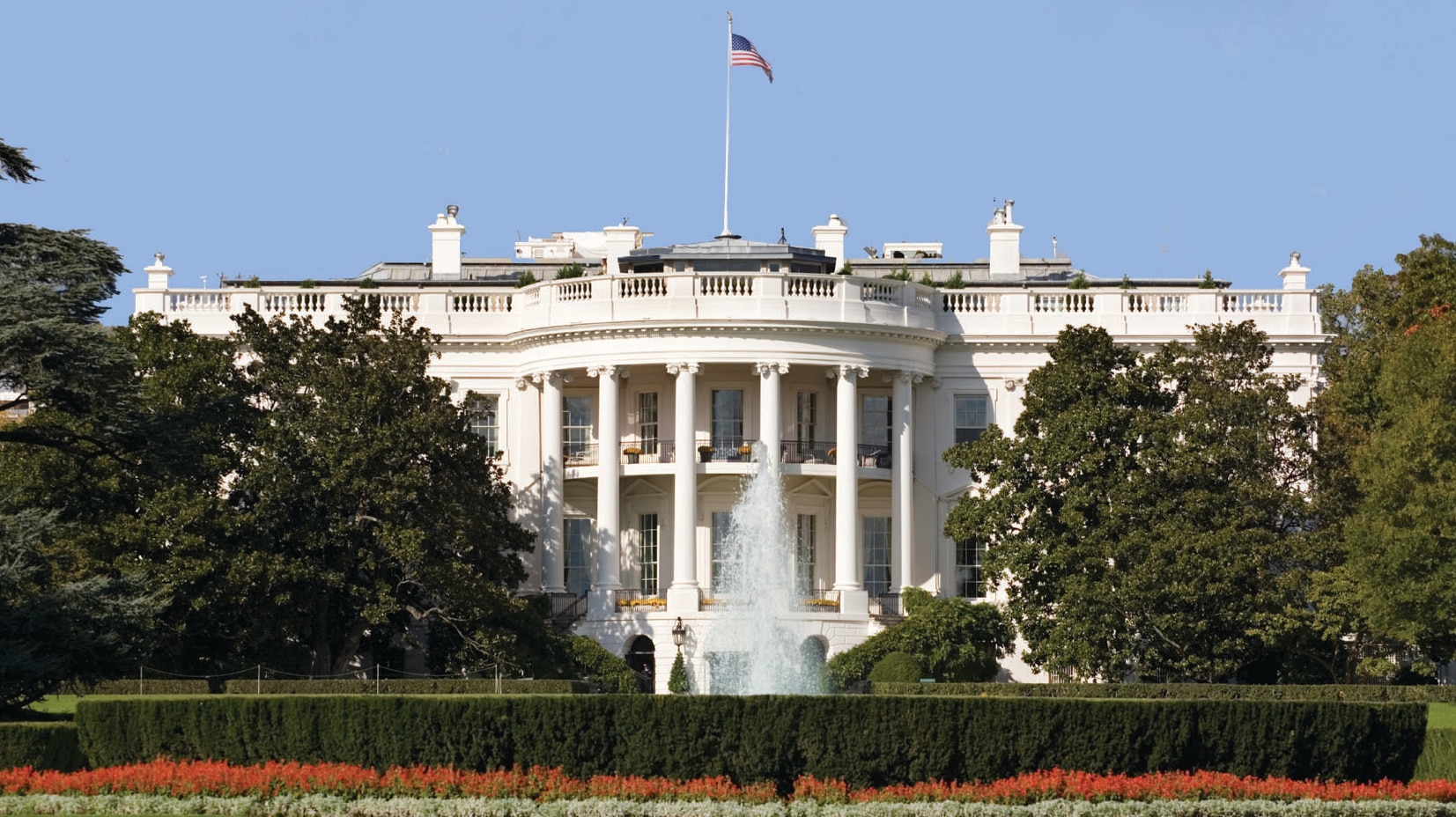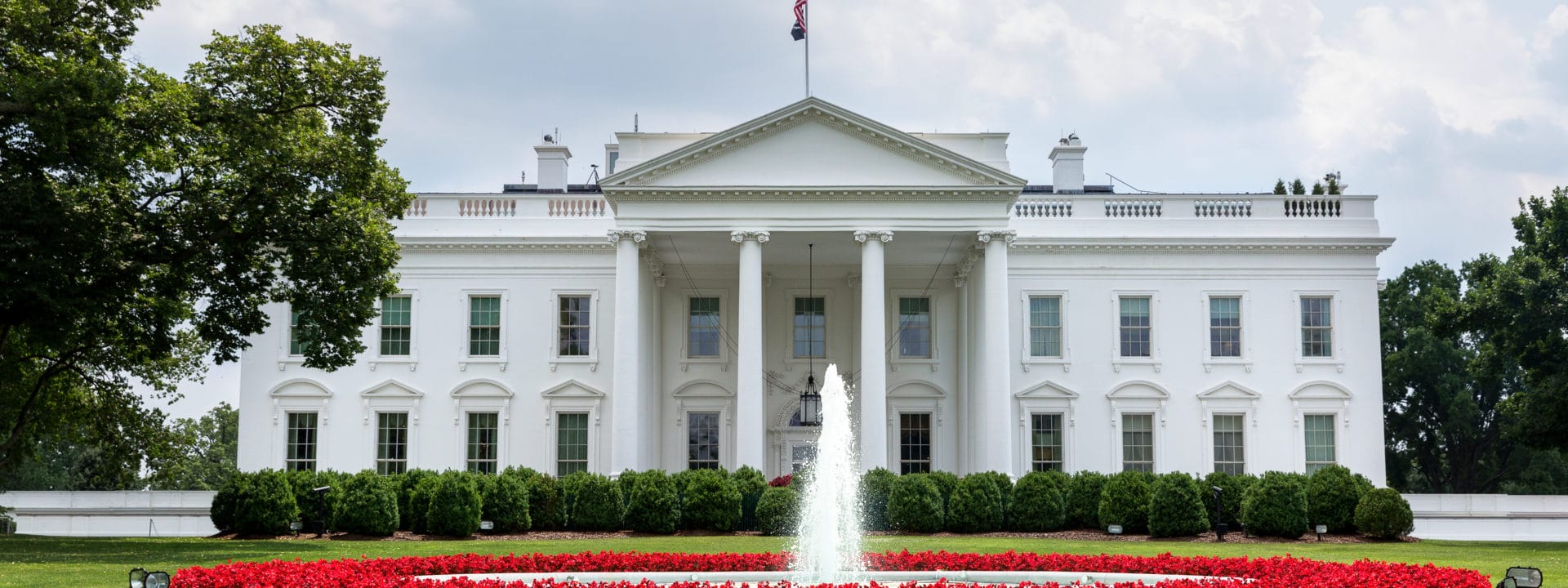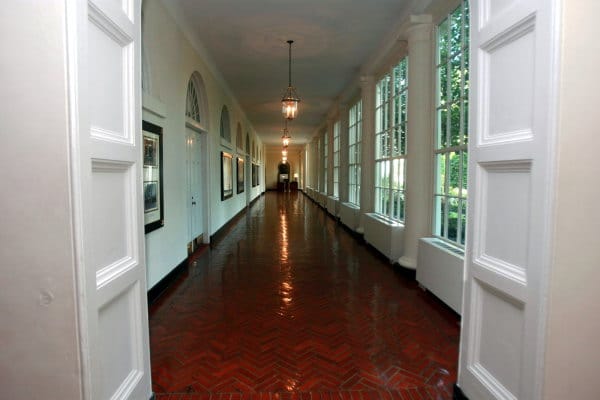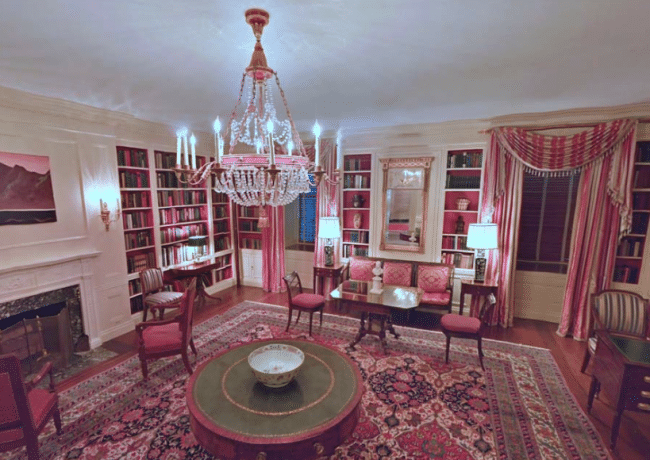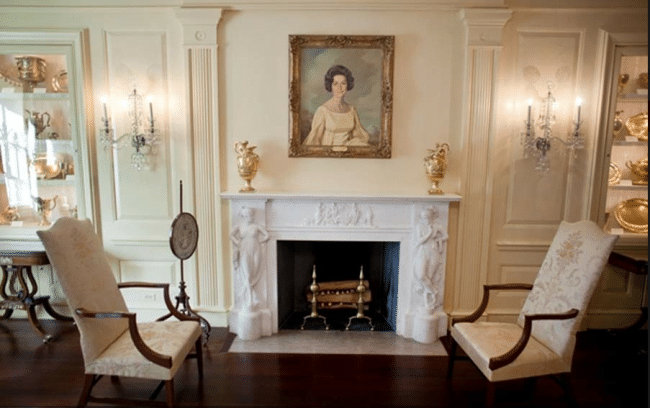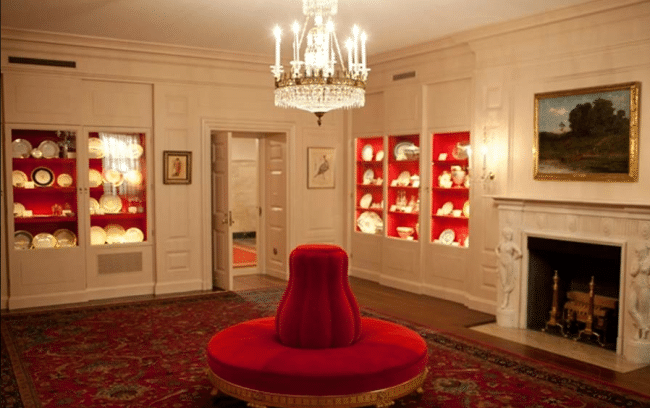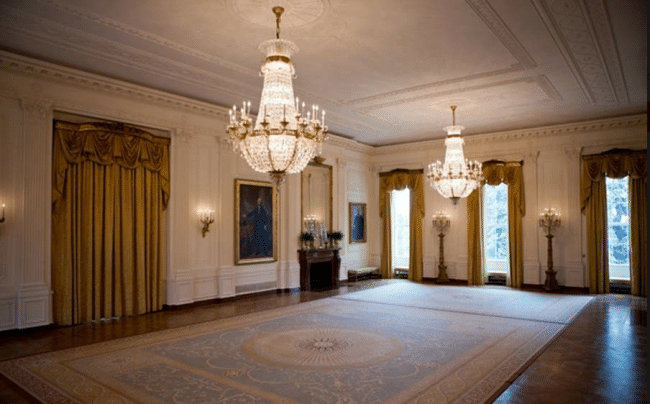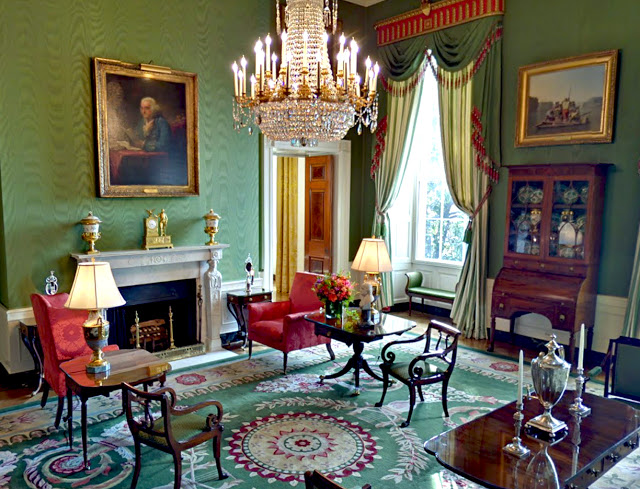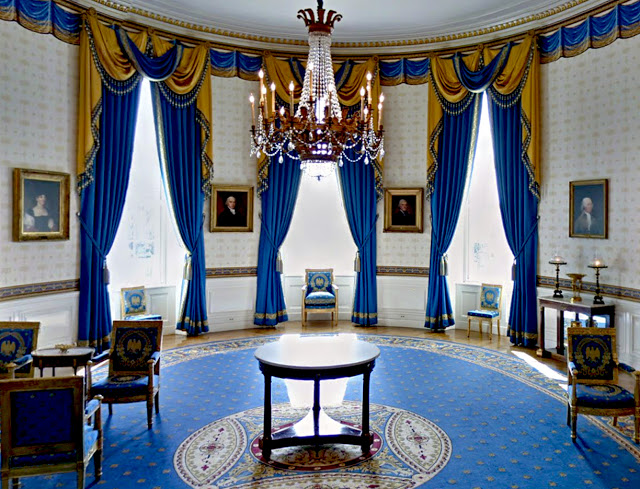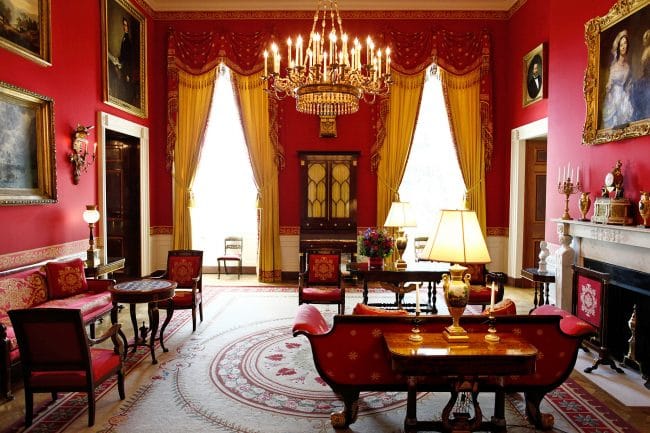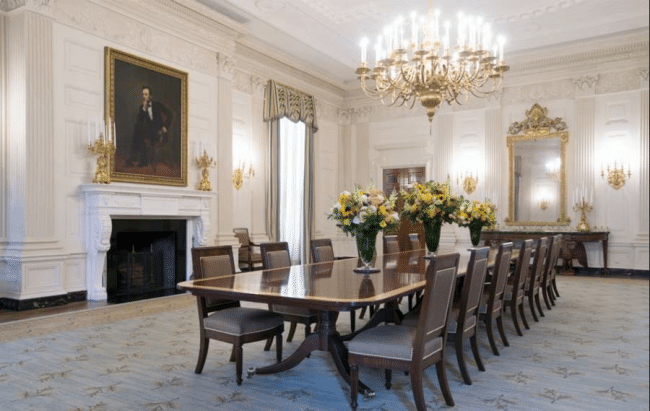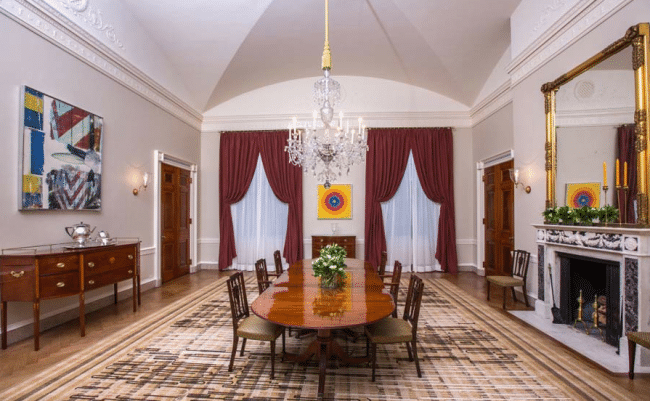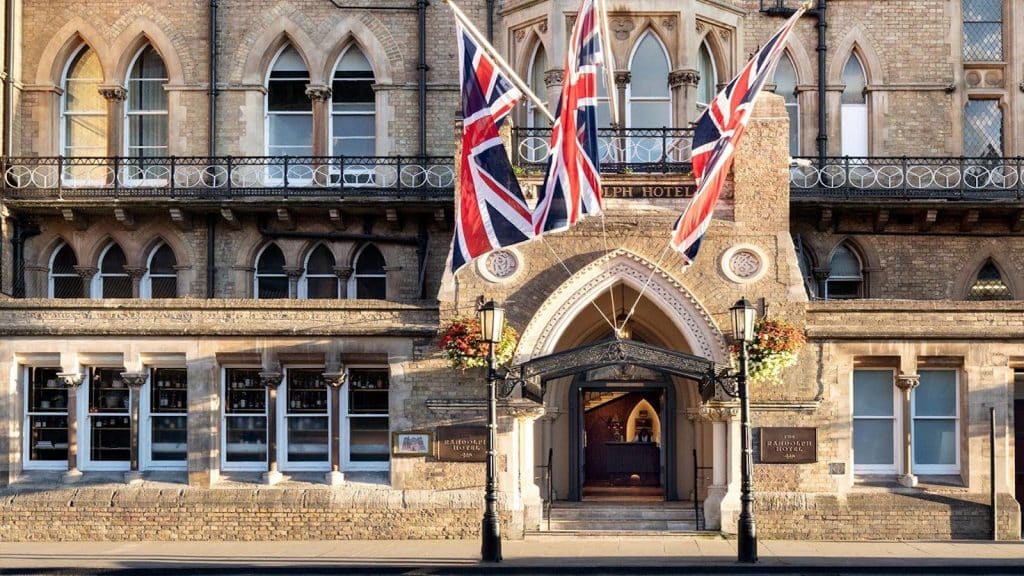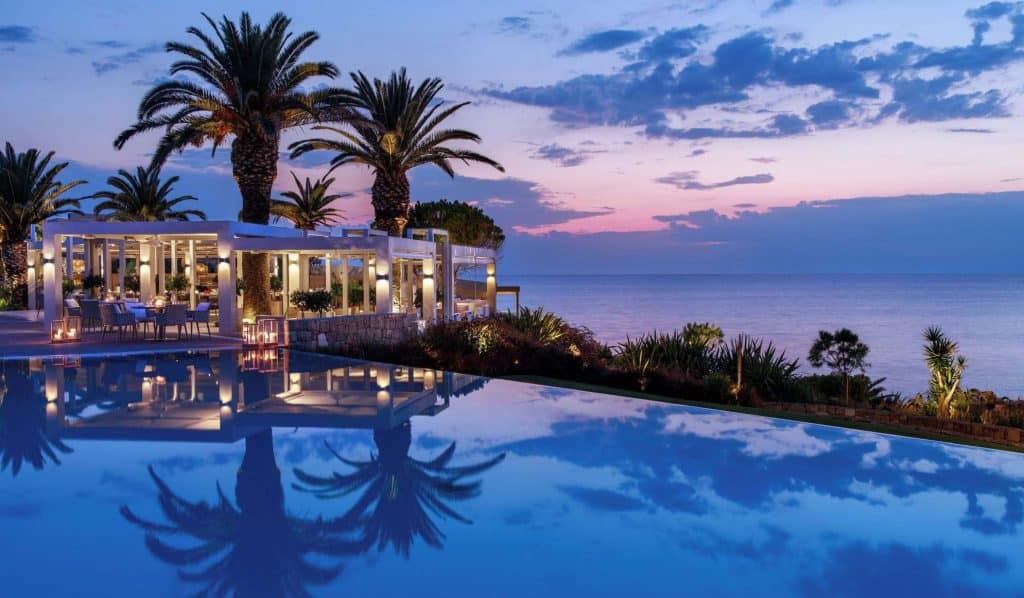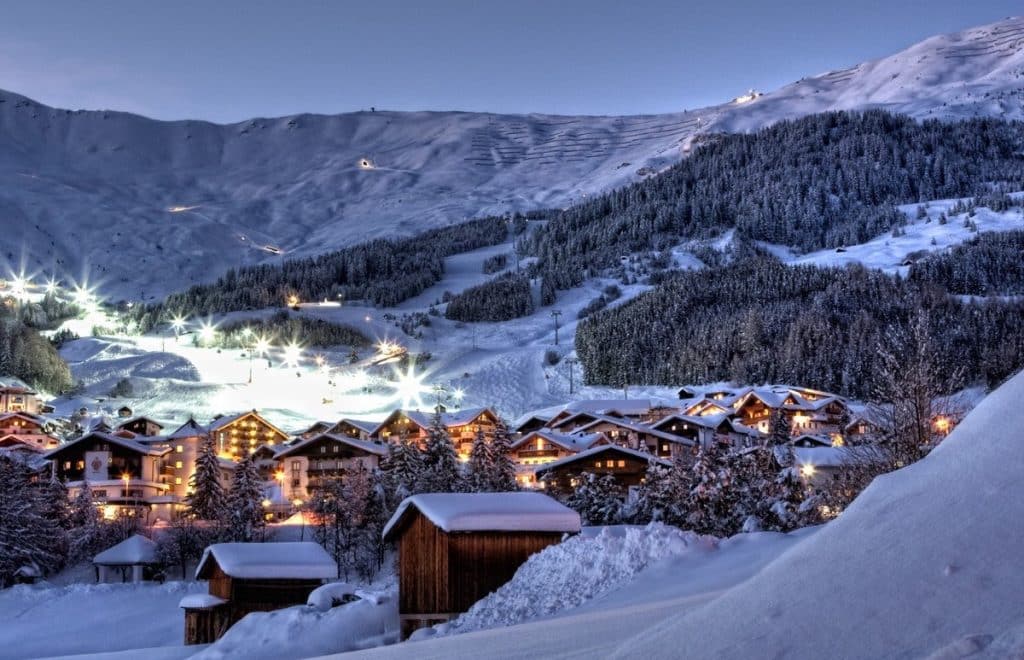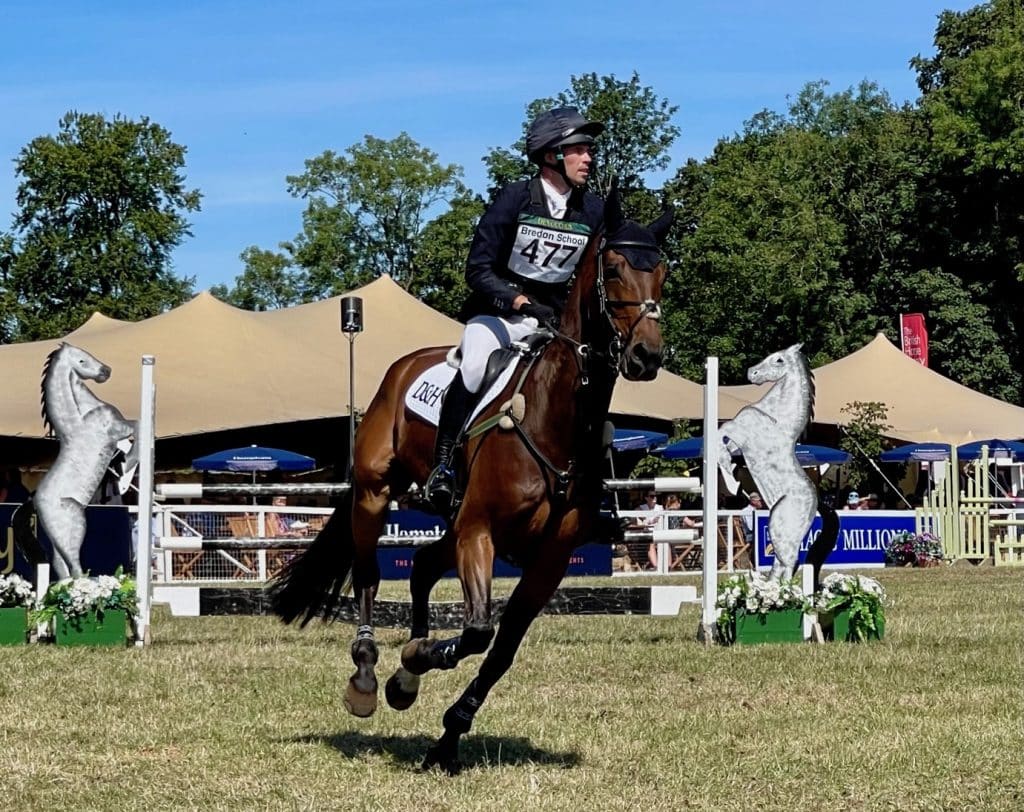Every U.S. President, except George Washington, has lived and worked at the White House since John Adams in 1800. The residence was designed by Irish-born architect James Hoban in the Neoclassical style. Construction took place between 1792 and 1800 using Aquia Creek sandstone painted white. When Thomas Jefferson moved into the house in 1801, he added low colonnades on each wing that concealed stables and storage. In 1814, during the War of 1812, the mansion was set ablaze by the British Army in the Burning of Washington, destroying the interior and charring much of the exterior.
Reconstruction began almost immediately, and President James Monroe moved into the partially reconstructed Executive Residence in October 1817. Exterior construction continued with the addition of the semi-circular South portico in 1824 and the North portico in 1829. The modern day White House complex includes the Executive Residence, West Wing, East Wing, the Eisenhower Executive Office Building, the former State Department, which now houses offices for the President’s staff and the Vice President, and Blair House, a guest residence. The Executive Residence is made up of six stories; the Ground Floor, State Floor, Second Floor, and Third Floor, as well as a two-story basement.
Tours of the White House are free, but it’s not straight forward to arrange; US citizens must apply though their local Member of Congress in the House or Senate and can request a visit up to three months in advance. If you wish to visit the White House and are a citizen of a foreign country, then you have to contact your respective embassy in Washington, DC.
Visitors enter the White House complex from the south side of East Executive Avenue. After passing through the security screening area, guests enter the East Wing of the White House and proceed down the East Colonnade following the route to the Residence.
First stop is the Library which contains volumes of history, biography, fiction, and the sciences, all by American authors. The furniture is American and of the Federal period, and the room is crafted from the original 1817 timbers that were salvaged during the 1948-52 reconstruction.
Opposite the Library, across the Central Hall, is the Vermeil Room which contains an extensive collection of vermeil (gilded silver) and is used for a variety of functions. Portraits of recent First Ladies are displayed here. This room was once used as billiard room.
Next door is the China Room which was set aside in 1917 for the sole purpose of displaying commemorative pieces of china and glass used by the Presidents.
Moving upstairs to the State Floor where all the rooms are linked by the beautiful chandelier-lined Cross Hall, we reach the East Room. This is the largest room in the White House. It is used for receptions, ceremonies, and other events, including weddings. The bodies of seven Presidents have lain in state here. Elaborately decorated ceiling hanglass chandeliers that date from 1902 provide a glittering opulence, and the concert grand piano, decorated with folk dancing scenes and eagle supports, was presented by the Steinway company in 1938. When not in use for functions in the East Room, the piano is placed in the Cross Hall.
The Green Room, which once served as Thomas Jefferson’s dining room, is now furnished as a parlour and is used for receptions. The walls are covered with watered green silk with draperies of striped silk damask. The coffee urn was owned by John Adams and is flanked by French candlesticks used by James Madison.
The President often uses the Blue Room to receive guests. It is furnished to represent the period of James Monroe, who purchased pieces for the room after the fire of 1814. Seven of the French chairs and one sofa from the original set bought by Monroe are still in the room. The colour blue was first used during the administration of Martin Van Buren. Honouring a long tradition, the White House Christmas tree is always placed in this room every festive season.
Next door, the Red Room is used reserved for small receptions, and has long been a favourite of the First Ladies. John Adams used this as a breakfast room; Rutherford B. Hayes took the oath of office here in 1877. The room is decorated as an American parlour of 1810-30. An 18th century French musical clock, presented in 1952 by President Vincent Auriol of France, sits on the mantle.
The State Dining Room at the west end of the Cross Hall, can seat 130 guests at dinners and luncheons. The painted English oak panelling dates from the renovation in 1902. Carved into the fireplace mantle is a quotation from a letter by John Adams: “I pray heaven to bestow the best of blessings on THIS HOUSE and all that shall hereafter inhabit it. May none but honest and wise men ever rule under this roof.”
Across the hallway from the State Dining Room, is the Old Family Dining Room which was opened to the public for the first time in February 2015. It was established by President and Mrs. John Quincy Adams in 1825 as a place for the family to take meals. Enjoyed since then by 38 Presidents and their families, it was considered the “breakfast room” until 1961, when First Lady, Jacqueline Kennedy, moved the family’s dining room into the family’s private quarters upstairs. Other first families prior to the Kennedys ate all of their meals there. After the family’s dining room was moved to the private residence, Presidents have used the Old Family Dining Room for small official meals, including working luncheons with foreign heads of state. The Obamas refurbished the room to serve as a showcase of modern art and design with works by Robert Rauschenberg and Josef Albers.
The current White House public tour covers the East Wing and the Residence, but West Wing Tours are by invitation only and are conducted by White House staff or members of the Secret Service.
For further information, please visit: www.whitehouse.gov
To purchase a copy of The Kennedys please visit here
Images by the White House.




